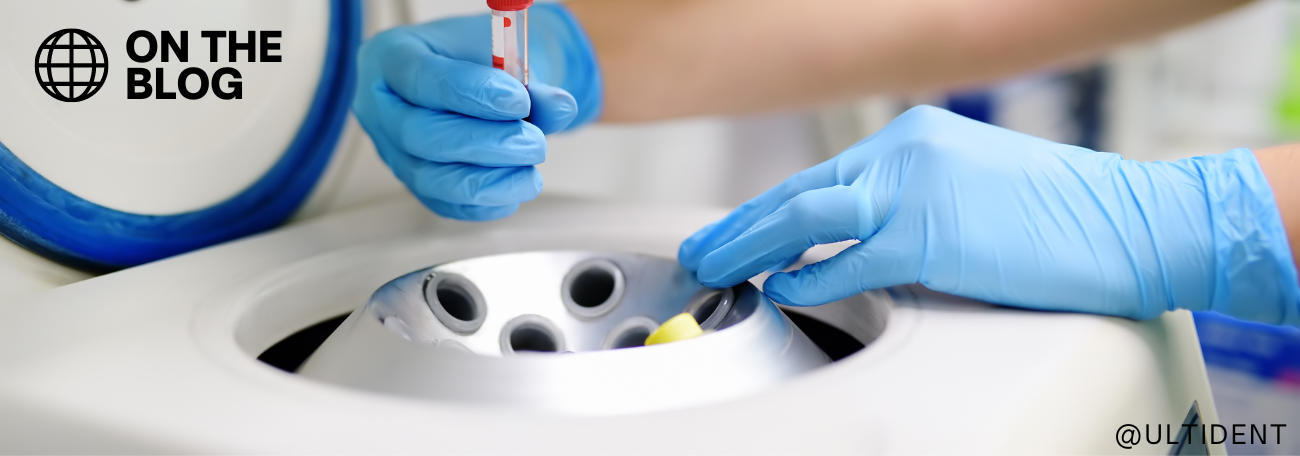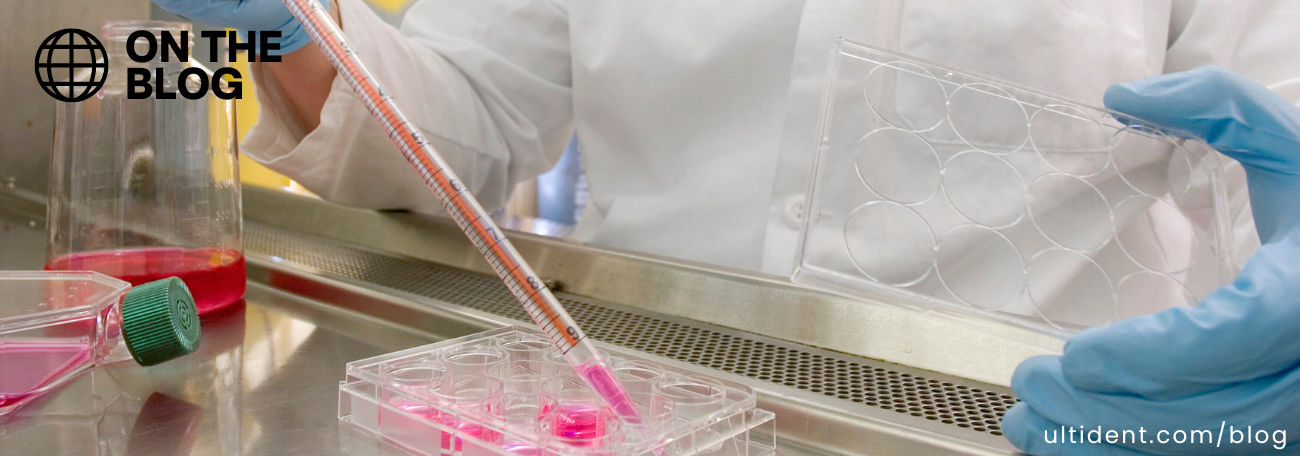On the Blog
-
1 JulRead more »


6 Tips for Safe Centrifugation
1- Use the right equipment
When it comes to selecting the right centrifuge, the most important factor is the spin rate. The spin requirements of your application (calculated in Relative Centrifugal Force, aka RCF, aka the g-force) must be equal to or lower than the maximum spin rate of the centrifuge. The type of rotor you select (fixed angle vs. swinging bucket) and its size will also impact the RCF of your equipment. Always operate rotors within the stated guidelines for speed and maximum compartment mass and be sure to keep all centrifuge components clean and well lubricated. Finally, make sure your centrifuge is calibrated and in proper working order or risk dangerous spills and sample loss.
2- Choose the right tubes
While selecting the right centrifuge tube will ultimately depend on your protocol’s specific needs, spin rate is once again a crucial component. You must use a tube which h
-
1 JunRead more »


From Tissue to Technology: 8 Fun Facts About Cell Culture Research
1- In 2020, stem cell experiments were launched into space.
Two lead research from the University of Zurich sent adult human stem cells to the International Space Station. The experiment started on March 6th 2020 as part of a resupply mission on Space X’s CRS-20. The researchers are testing an innovative method to produce human tissue, and hope to gain a better understand of how human tissue is produced in the weightless atmosphere of space.
2- Frog nerve fibers were the first successfully cultured animal cells grown outside the human body.
In 1907, American zoologist Ross Granville Harrison cultured frog neuroblasts in a lymph medium. This proved that nerve fibers can be developed without a pre-existing bridge or chain and that tissues can be grown outside of the body. This finding helped pave the way for stem cell research, an understanding of the nervous system and surgical tissue
-
3 MayRead more »


More than Meets the Eye: Cleaning & Disinfection tips for Canadian Labs
We know that frequent cleaning and disinfection is essential to prevent the spread of germs. We also know that If you are working in a lab, with medical devices, or dealing with sensitive equipment, you need to take extra precautions in order to keep the environment safe for everyone who works there.
But did you know that a clean lab has been proven to help with productivity, quality & success of outcome, morale and mental health? We’re going to take a look at some tips to help keep your lab healthy and happy.A) Practice good housekeeping
Although maintaining a clean and organized environment sounds obvious, a study by Nofer Institute of Occupational Medicine found that over 45% of accidents studied violated the fundamental principals of housekeeping. Housekeeping is everyone’s responsibility, to avoid unnecessary accidents:
-
5 AprRead more »


Celebrating PCR: 5 Innovative Breakthroughs That Changed the Course of Science
Nearly 40 years after its invention, scientists continue to find ground-breaking applications for PCR. What is even more amazing is that these achievements span vastly across scientific disciplines including forensics, paleontology, and agriculture.
PCR is shorthand for a simple but very powerful procedure in molecular biology called polymerase chain reaction. Scientists can amplify a segment of DNA or produce millions of copies and compare this DNA to other samples.
Let's take a look at some of the top triumphs that are the result of this incredible technology.
1- The Human Genome Project
The Human Genome Project was the international research effort to determine the DNA sequence of the entire human genome. The first drafts of the human genome, published 20 years ago, opened the doors to a whole new understanding of genetics, DNA and how it affects humans physiologically.
-
8 MarRead more »


What to Consider when Choosing a Centrifuge Tube
Centrifuge tubes are used in labs worldwide for research and clinical purposes. Although all 15 & 50 mL tubes may look similar, choosing the right tube for your protocol is crucial when handling valuable samples.
Here are a few things to consider when choosing the right tube for your lab:
Volume
Generally, a centrifuge tube should be filled to at least 75% of its capacity to be centrifuged. Tubes centrifuged with too much dead space can lead to material stress, resulting in tube failure. The most common tubes sold are 15- & 50-mL conical tubes. Recently, 5-, 10- & 25-mL tubes that fit into traditional 15- & 50-ml tube rotors have come onto the market. Despite the fact that these options might more closely match actual sample volumes of certain labs, they are not as popular as traditional 15- & 50-mL models. In some cases, adaptors can be used to allow certain
-
1 FebRead more »


8 Tips to Encourage PPE Compliance
Maintaining a safe and healthy work environment is crucial, particularly in industries where Personal Protective Equipment (PPE) is essential to mitigate risks. PPE compliance not only safeguards employees from potential hazards but also plays a vital role in preventing the spread of viruses and diseases, (this can be particularly in workplaces that interact with customers).
In this article, we will share eight practical tips to help organizations encourage PPE compliance. By implementing these strategies, employers can enhance safety measures, protect their employees, and contribute to public health by preventing the transmission of infectious illnesses. Together, we can create a workplace culture that prioritizes responsible PPE usage, promoting both employee well-being and customer safety.
- If you have not already, establish a clear policy requiring the use of PPE. Ensure all employees (and customers if applicable) are
-
5 JanRead more »


The History of Your Favourite Lab Equipment
You use them in the lab every day, but have you ever stopped and wondered how these products were invented? In today’s blog we investigate the intriguing history of some of your favourite pieces of scientific equipment.
The Centrifuge
Centrifuges offer an efficient means of preparing and separating samples of different densities and viscosities by placing a tube in a rotor and spinning it at a defined speed. This form of density-driven preparation dates to the 1400s when dairy farmers would use hand powered milk separators to separate cream from milk. In 1864, the dairy centrifuge was mechanised by Antonin Prandtl, but it was only in 1869 that Friedrich Miescher became the first scientist to use a centrifuge in a lab. Miescher successfully isolated nucleic acids from the nuclei of white blood cells, a discovery which served as an important development in the discovery of DNA inheritance.
Magnetic S
-
1 DecRead more »


Five Things that set Ultident Apart from the Competition
We are a local, independent organization with entirely local leadership
- We offer quick and reliable delivery across Canada and have a deep understanding of the Canadian Scientific Market.
- We have extensive experience catering to government, academic and clinical institutions and understand your needs .
- Our customers also love how easily they can contact their territory manager and our customer service team.
We fully understand our customers’ unique challenges
- We know that sourcing the right product isn’t always easy, especially when you’re dealing with different device manufacturers and suppliers for your consumables.
- At Ultident, we understand the challenges of choosing consumables that are compatible with you existing devices and are prepared to give you solid recommendations for your specific application.
- We’re also equipped to sugg
-
3 NovRead more »


The Ultimate Guide to Microscope Slides
Are you familiar with microscope slides, but find the terminology, features, and extensive options overwhelming when it comes to making a selection?
We are going to break down the difference between each slide type to help you identify which type is best suited for your application.
A plain slide is the most basic type of slide available. It is made of glass and measures 3” by 1” (75mm by 25mm) and is approximately 1 mm thick. On wet slides, a cover slip (an even smaller, thinner piece of glass) is used to secure the object under observation to the slide. The sample, fixed between the microscope slide and cover glass, is then placed into the microscope for examination.A frosted slide is a slide that has been grinded or chemically etched to create microgrooves which elevate bond strength. While these microgrooves can help ensure a solid attachment of the specimen to the sli
-
6 OctRead more »


5 Future Trends in Lab Equipment
Advancements in technology can have a big impact on how laboratory technicians, scientists, and students work in labs. Here we examine the impact of these new innovations and investigate new trends that will increase the capacity, efficiency, and accuracy of laboratory capabilities.
1- Automation
Tasks that were once complex, precise, and slow can now be accomplished in short periods of time and with greater accuracy. Many Labs are implementing robotic equipment and automation strategies to capitalize on technologies that can enable more efficient processes. Together these processes increase productivity (something we know is essential with the increased demand for high-throughput screening), elevate data quality and reduce process cycle times. As equipment manufacturers continue to develop faster, more affordable tools the automated lab is becoming more accessible to researchers.
2- Analytics
This shift towards





